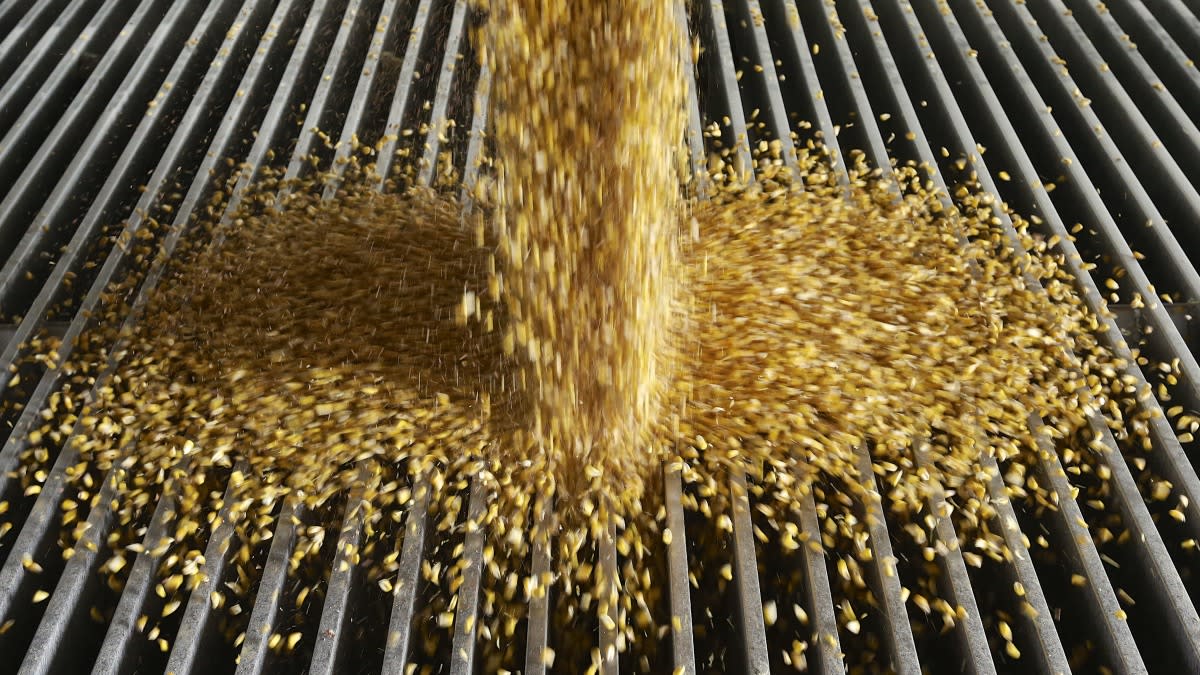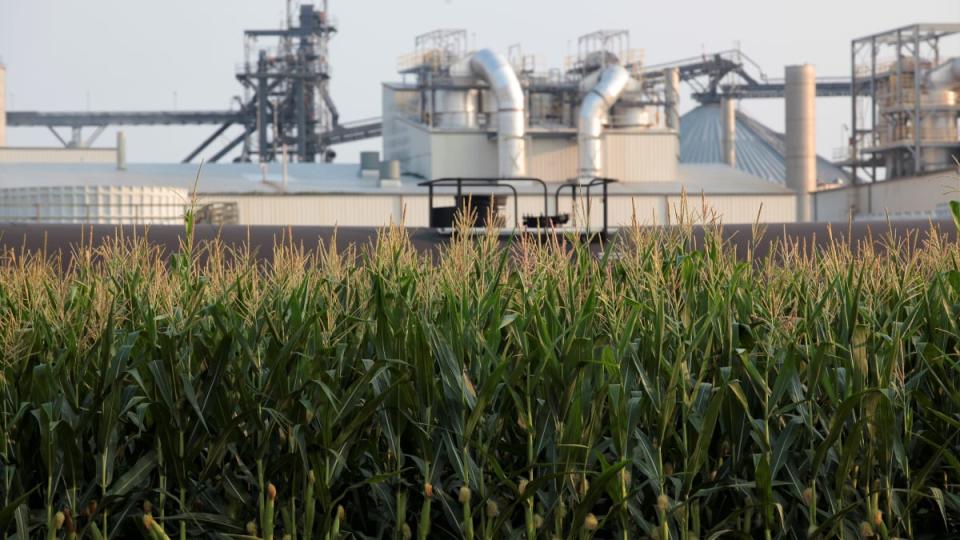It's not just Big Oil: A look at Big Corn, which is also suing over EPA emissions rules

Last week, Reuters reported that "Oil and corn groups team up against Biden's tailpipe emissions rules." Presidential elections always restore corn to the headlines because corn is such enormous business that the tall grass should be called "Gold on the Cob." That's not just gold for farmers, either, thanks to corn's requirements and reach. Industrial farming companies like Cargill, chemical companies like DuPont and Monsanto, and ethanol refiners like Poet Biorefining and Archer Daniels Midland all derive massive benefit from the amazing maize.
The corn lobby has a touchy relationship with Big Oil. When the Associated Press published "The Secret, Dirty Cost of Obama's Green Power Push" in 2013 (highly recommended read), we're told, "An industry blog in Minnesota said the AP had succumbed 'to Big Oil's deep pockets and powerful influence.'"
As governments have taken more steps to enact regulations aiming to curb greenhouse gasses, though, corn finds common cause with oil. Mandated reductions in traditional fuel usage threaten refiner profits, and less fuel used — or no liquid fuel, at least directly, in the case of electric vehicles — means less ethanol added, reducing ethanol purchases and subsidies distributed along the value chain. Various lawsuits filed against the EPA in the past few weeks represent the combined forces of the American Petroleum Institute, National Corn Growers Association, American Farm Bureau Federation, Renewable Fuels Association and National Farmers Union.
It's a topic so big it could come up in tonight's presidential debate (CNN and other channels, 9 p.m. Eastern). The higher fuel economy standards are an initiative of President Biden's administration (he made a case for ethanol in 2022 in a speech inside a Poet Biofuels building); former President Donald Trump, meanwhile, complains about EVs every chance he gets. The big business of corn is one reason why.
RFA President and CEO Geoff Cooper summed up the problem for the ethanol lobby with, "[The] EPA grossly exceeded its statutory authority by finalizing regulations that effectively mandate the production of EVs, while blatantly excluding the ability of flex fuel vehicles and low-carbon, high-octane renewable fuels like ethanol to achieve significant vehicle emissions reductions."
Using ethanol to power cars and reformulate gasoline isn't new. Henry Ford's 1908 Model T could run on ethanol because gasoline wasn't the commodity it is today. Refiners began mixing ethanol into gasoline in the 1920s to get higher octane ratings, which reduced knock (lead was a much more famous octane enhancer). And ethanol use spiked during World War II when gas supplies were diverted to the U.S. military.

The Calgren Renewable Fuels ethanol plant in Pixley, Calif. (AP)
The upsides
Ethanol subsidies aren't new. They began in the U.S. with the Energy Policy Act of 1978, and remained in effect as either a subsidy and/or tax credit until the end of the Volumetric Ethanol Excise Tax Credit in 2011, by which time the system was said to cost the government more than $5 billion per year. Well, the payouts didn't end, really, the government simply created new methods of providing incentives, grants, loan guarantees, production payments and tax credits.
Leaning on ethanol to reduce greenhouse gas emissions isn't new, either. The 1990 Clean Air Act required more oxygenated gasoline in areas of the country with elevated ground-level ozone measurements. Increased oxygenate helps gasoline burn more completely during combustion, reducing the amount of carbon monoxide, soot, and environmentally harmful compounds that escape from a vehicle's tailpipe.
Ethanol and MTBE (methyl tertiary butyl ether) became popular oxygenates. As researchers began to question MTBE's ability to break down in water, though, ethanol — an organic resource — found more favor. As some states began declaring MTBE unwelcome beginning in 2000, the U.S. government's 2003 Energy Bill declared ethanol the only legal fuel oxygenate for the U.S. market.
That established a federally guaranteed market for ethanol for the first time (as opposed to refiners having a choice in oxygenate). Ethanol doesn't need to be made with corn — soybeans and sorghum are other options — but renewable fuel in the U.S. today is effectively corn-based.
Two years after that energy bill, the Renewable Fuels Standard (RFS) in the Energy Policy Act of 2005 exploded ethanol's guaranteed market. The RFS instructs the U.S. Environmental Protection Agency to decide on a minimum volume of renewable fuels to be included in the nation's fossil fuel supply every year. The volumes, called Renewable Volume Obligations (RVO), change based on government agency predictions of fuel usage. The renewables take four forms: Conventional biofuel (also called renewable fuel in EPA parlance); biomass-based diesel; "other advanced biofuel;" and cellulosic biofuel.


Big crop, big business
U.S. Department of Agriculture tables on U.S. Bioenergy Statistics show the effects all this legislation has had on corn production. In the first quarter of 1986, 3.5% of corn production by bushel went to fuel alcohol use. That percentage crossed into double digits for the first time in Q3 of 2002, when 11.9% of corn production went to fuel alcohol use.
From December 2022 to February 2023, 35.7% of U.S. corn production went to make ethanol. Another table in the Bioenergy Statics spreadsheet shows that for the full year of 2023, 5.3 billion bushels of corn went to ethanol production.
Soybeans maxed out at 131 million bushels used for ethanol back in 2016; for the past two years, there's no data for sorghum.
All that corn got plugged into satisfying the EPA's "renewable volume obligation" for the nation's fuel supply; in 2023, that was 20.82 billion gallons of renewable fuel poured into the 143 billion gallons of gas American drivers chugged through last year. The RVO for 2024 is 21.81 billion gallons or 13.55% of the nation's predicted fuel usage. In 2025, the RVO will be 22.68 billion gallons or 13.05%.
So it is that corn is America's largest agricultural commodity crop and the U.S. is the world's largest corn grower, and it's not even close. The U.S. Department of Agriculture shows that in 2023, farmers grew a record 15.3 billion bushels of corn on 86.5 million acres of land, compared to just 4.16 billion bushels of soybeans, the second-biggest crop, on 82.4 million acres. Add the yields for soybeans, grain, rice and cotton, and they don't come close to half of last year's corn crop.
Only 1% of corn grown is the sweet corn we eat at meals. The rest, often called field corn or dense corn, is used for products like corn meal, high fructose corn syrup and plastics. But on average, roughly 40% of field corn ends up at the pumps.
It's tough to find subsidy amounts the government pays to farmers for corn production not strictly related to ethanol. USA Facts data claims that in 2016, corn farmers received $2.2 billion in government subsidies, beating the individual amounts disbursed for soybeans, sugar, cotton, wheat, oranges, livestock, hay and forage, and "all others."
On top of this, a giant export market that the government continues to fight to expand gives corn growers a ton of power that can turn into additional government payments.
So when you hear about farmers going on a date to Washington, D.C., with The Seven Sisters to challenge some EPA action, these are the numbers compelling the union.

The downsides
And none of this gets into the underside of the issue, the, let's say, debatable aspects about corn-based ethanol: The tradeoff for lower vehicle emissions being what some believe are horrific environmental consequences. The same way high gas prices made shale oil and fracking good business propositions, the RFS encouraged farmers to plant corn in places historically considered unwelcome, tilling huge amounts of virgin prairie and conserved land in the process.
Tilling that land is said to have unlocked enough carbon dioxide that it would take two decades for the planted field to absorb it. The enormous water needs to grow corn are blamed for lowering water tables. Excessive use of nitrogen fertilizers to maximize yields sucks oxygen from the soil and water, leading to dead zones in waterways, including an enormous zone in the Gulf of Mexico. In 2021, the National Oceanic and Atmospheric Administration measured the Gulf's dead zone at roughly 6,334 square miles, larger than the average dead zone for the previous five years of 5,380 square miles. That's an area larger than the state of Connecticut, hovering mostly off the coast of America's second-largest seafood producing state, Louisiana.
And even before all of that, the founding presumptions of the RFS have been questioned since the beginning. Many suspect corn-based ethanol can't be made to work with the Renewable Fuels Standard without some creative numbers.
The RFS stipulates that "Renewable fuel (or conventional biofuel) typically refers to ethanol derived from corn starch and must meet a 20% lifecycle GHG [greenhouse gas] reduction," meaning corn ethanol would be 20% less polluting than gasoline. But when the Obama administration tried to work out the math for implementing the RFS way back in 2009, it found that corn ethanol would only be 16% less polluting than gasoline by 2022, based on a maximum yield of 180 bushels of corn per acre.
All the stakeholders complained, saying the government's figures were too conservative. So the EPA came up with a "high yield case scenario" that achieved a 21% reduction by assuming a yield of 230 bushels per acre. (Getting more bushels off an acre means it took fewer resources to grow each bushel, so it's environmentally cleaner.)
The problem is that corn growers have never hit that yield number. The yield in 2014 was about 173 bushels per acre. Last year's yield was 177 bushels per acre, right around the original, and insufficient, government estimate.
Corn might not come up in tonight's presidential debate. But for all the reasons we've touched on here, and so many more (food prices, high-fructose corn syrup, the list goes on), corn will continue to be a big topic from now until November and beyond.
You Might Also Like



